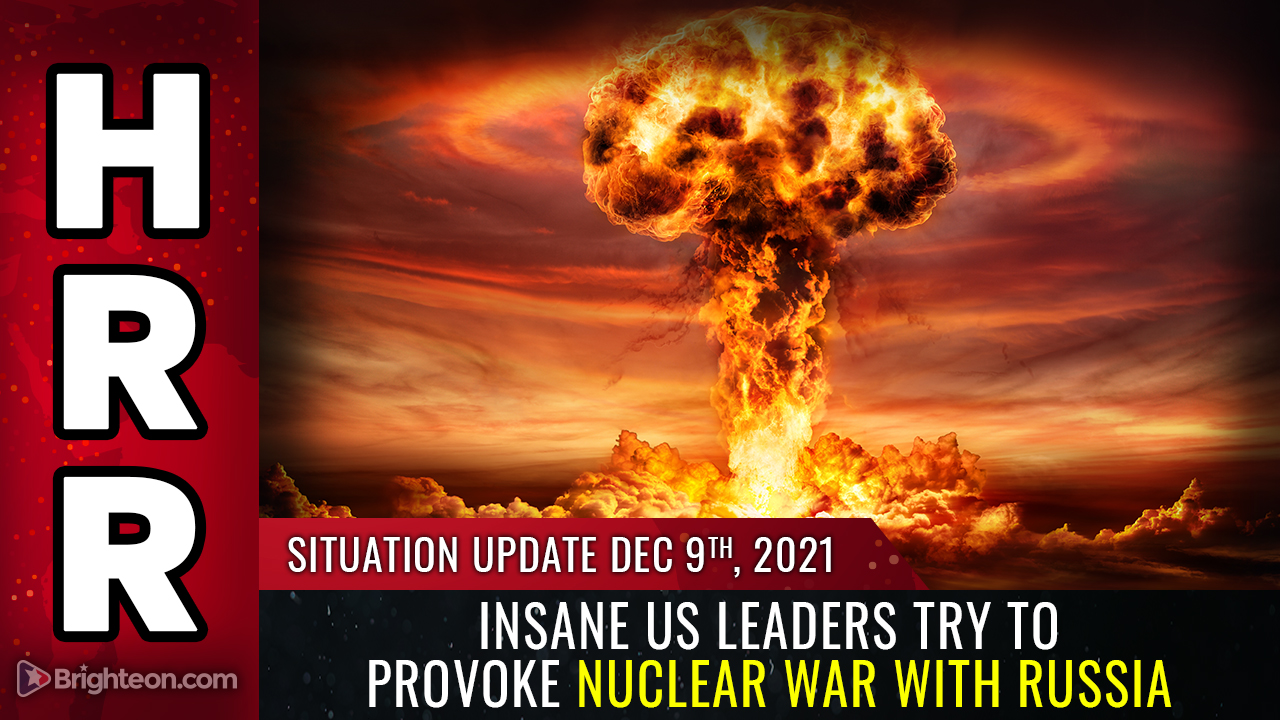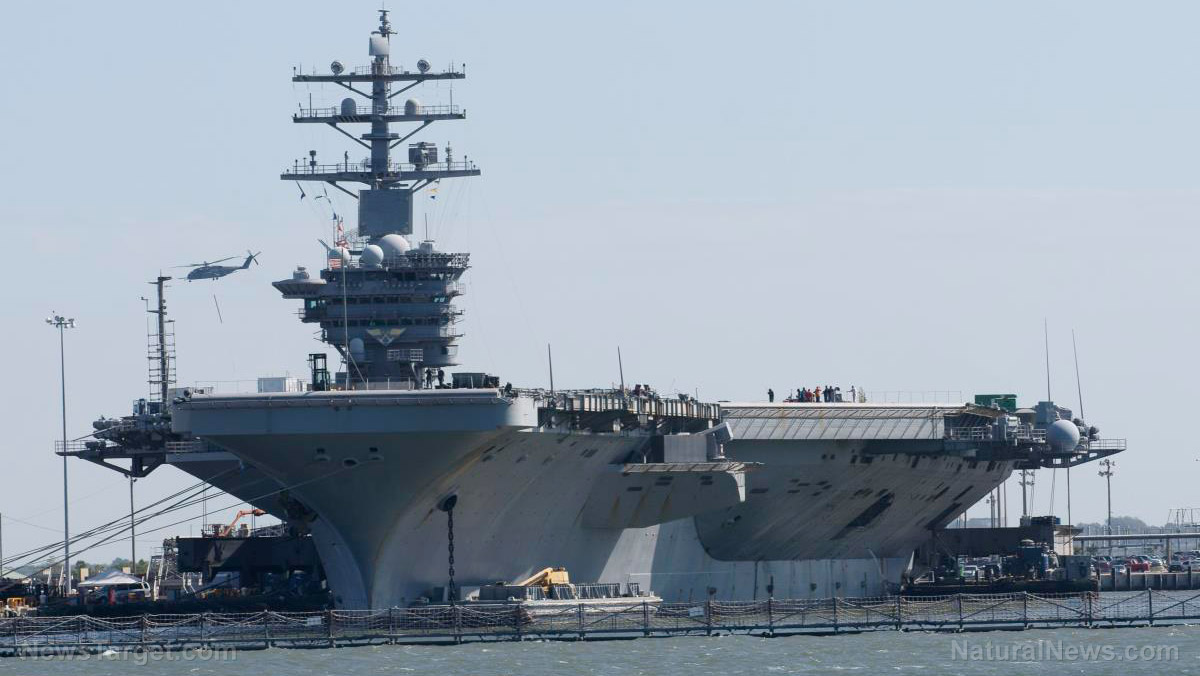US would quickly lose against China if they invaded Taiwan
03/18/2021 / By Franz Walker

A U.S. Air Force general has warned that a Chinese invasion of Taiwan would be devastating to the U.S. military thanks to the former’s aggressive military build-up in recent years.
In a recent interview with Yahoo News, Air Force Lt. Gen. S. Clinton Hinote said that the outcome was based on a classified Pentagon war game simulation carried out over the years. Hinote said that U.S. forces were losing more quickly in recent simulations after Beijing’s new military capabilities were taken into consideration.
“The definitive answer if the U.S. military doesn’t change course is that we’re going to lose fast,” Hinote said. “In that case, an American president would likely be presented with almost a fait accompli.”
U.S. forces lost in wargame simulations
The U.S. Air Force conducted a simulation of a conflict set more than a decade in the future around September 2020. This simulation started with a Chinese biological-weapon attack on U.S. ships and bases in the Indo-Pacific region. Using military drills as cover, China would then deploy an invasion force to attack Taiwan, while at the same time targeting U.S. bases and ships in the region with missile strikes.
“Whenever we war-gamed a Taiwan scenario over the years, our Blue Team routinely got its ass handed to it, because in that scenario time is a precious commodity and it plays to China’s strength in terms of proximity and capabilities,” said David Ochmanek, a former deputy assistant secretary of defense for force development who’s now a senior RAND Corporation analyst.
“That kind of lopsided defeat is a visceral experience for U.S. officers on the Blue Team, and as such the war games have been a great consciousness-raising device,” he added. “But the U.S. military is still not keeping pace with Chinese advances. For that reason, I don’t think we’re much better off than a decade ago when we started taking this challenge more seriously.”
The results of the war game are particularly alarming as the Chinese Communist Party has escalated its war-mongering toward Taiwan after U.S. President Joe Biden took office. In late January, one Chinese military official even threatened war against the island.
More recently, on March 10, Taiwan’s Ministry of National Defense reported that a Chinese anti-submarine warfare aircraft entered the country’s southwestern air defense identification zone (ADIZ). This is the latest in what has been nearly daily incursions into its ADIZ since the start of the year.
China could attack within the “next six years”
During a Senate Armed Services hearing on March 9, Adm. Philip Davidson, head of the U.S. Indo-Pacific Command warned that the Chinese regime could invade Taiwan within the “next six years.” He stated that the U.S. military was losing its ability to deter conflict in the region. (Related: Threat of global nuclear war now even higher than during the Cold War.)
“I think our conventional deterrent is actually eroding in the region,” he said, citing the Chinese military’s “vast advances” in size and capability over the past decade.
The People’s Liberation Army Navy, China’s naval arm, is now larger than the U.S. Navy. The U.S. Indo-Pacific Command projects that by 2025, it will have three aircraft carriers in the Western Pacific to the U.S. Navy’s one, 12 amphibious assault ships to the Navy’s four, and 108 modern multi-warfare combatant ships to the Navy’s 12.
U.S. military needs to focus on deterring China
Part of the issue lies in the fact that the Pentagon has been distracted fighting counterterrorism and counterinsurgency wars in Iraq and Afghanistan for two decades. Meanwhile, China has been free to focus on what the Pentagon terms an advanced “anti-access, area denial” (A2/AD) strategy in the region.
Beijing is currently laser-focused on Taiwan and regional hegemony, while the U.S. military must project power and prepare for potential conflicts all over the globe.
In addition, complacency has struck U.S. military’s senior officers thanks to it being the perennial winner in a number of wars.
“My response is that China’s growing military confidence is manifesting itself in an increasingly belligerent approach to its neighbors, the growing frequency of the PLA’s violation of the airspace of Taiwan and Japan, and the bullying of other neighbors in the South China Sea,” said Ochmanek. “Under Xi Jinping there has been a dramatic increase in such provocations compared to a decade ago, and I think it’s grounded in his belief that militarily, China is strong enough now to credibly challenge us.”
According to Hinote, the key now for the U.S. military to regain its ability to deter Chinese aggression would be to restructure U.S. forces in a way that causes Chinese generals to question whether or not they can win.
“If we can design a force that creates that level of uncertainty and causes Chinese leaders to question whether they can accomplish their goals militarily, I think that’s what deterrence looks like in the future,” he said.
The only problem, Hinote noted, is that the defensive posture that they researched in the war games is still not the one reflected the U.S. current defense spending plans.
“We’re beginning to understand what kind of U.S. military force it’s going to take to achieve the National Defense Strategy’s goals,” he said. “But that’s not the force we’re planning and building today.”
Follow CommunistChina.news for more on the threat Beijing poses to the stability of Asia and the Western Pacific.
Sources include:
Tagged Under: air force, China, defense, Department of Defense, invasion, loss, military, nuclear war, Pentagon, Taiwan, War
RECENT NEWS & ARTICLES
COPYRIGHT © 2018 MILITARYTECHNOLOGY.NEWS
All content posted on this site is protected under Free Speech. MilitaryTechnology.news is not responsible for content written by contributing authors. The information on this site is provided for educational and entertainment purposes only. It is not intended as a substitute for professional advice of any kind. MilitaryTechnology.news assumes no responsibility for the use or misuse of this material. All trademarks, registered trademarks and service marks mentioned on this site are the property of their respective owners.





















